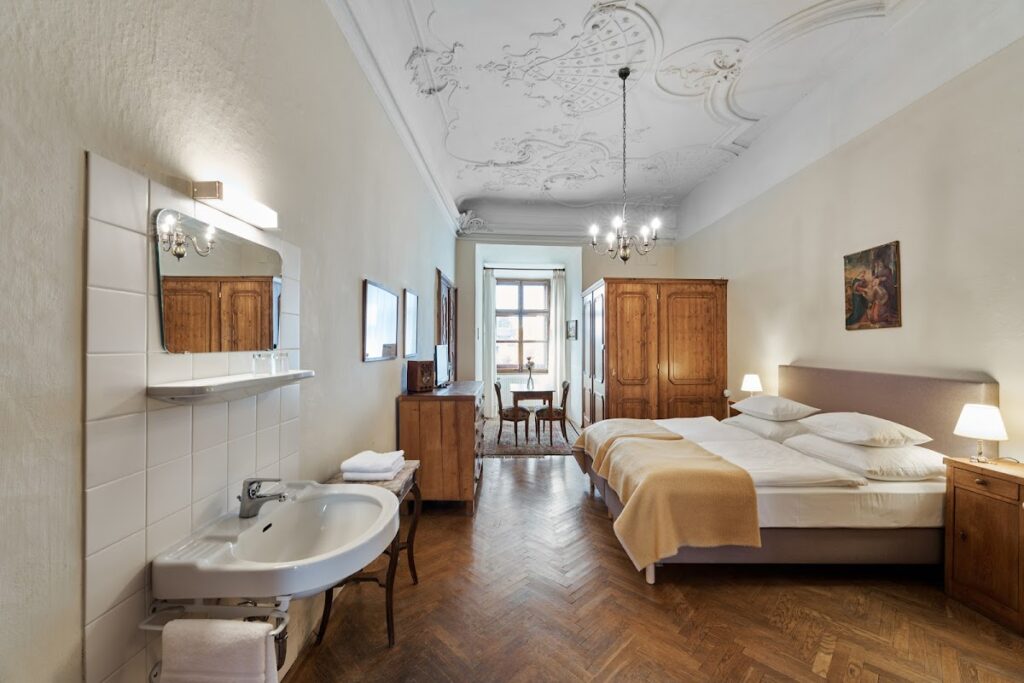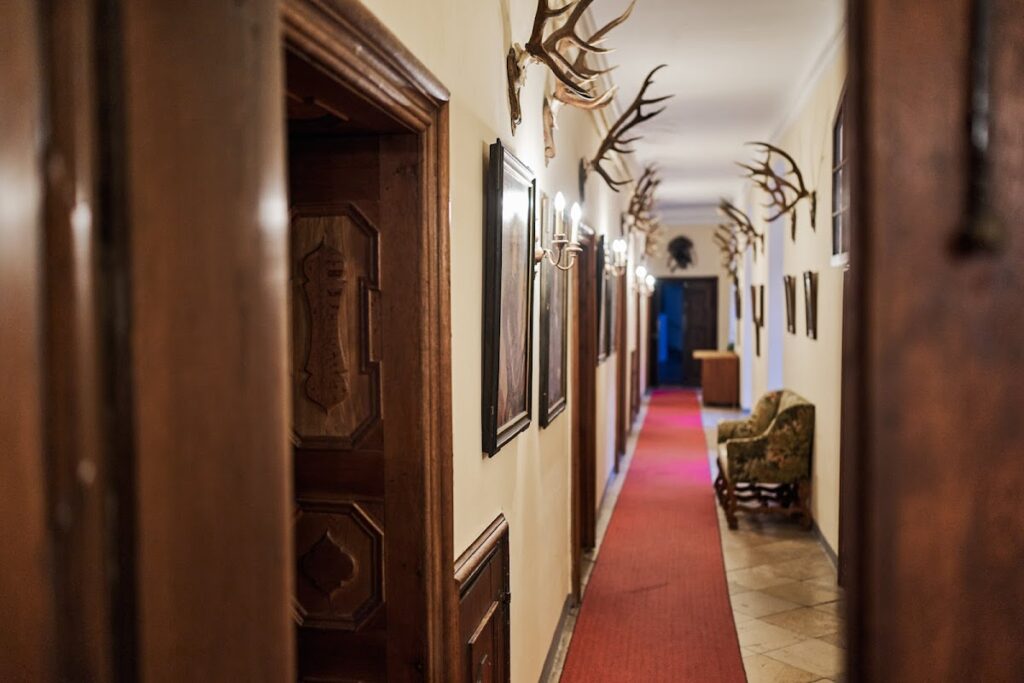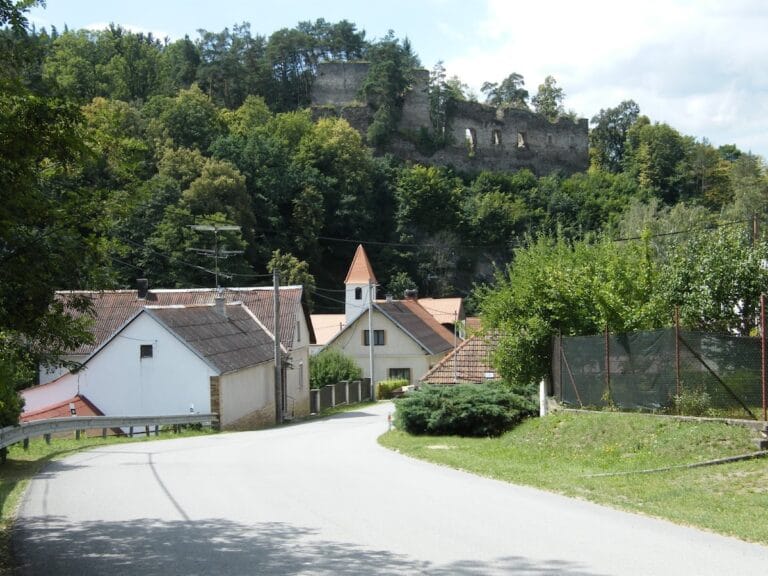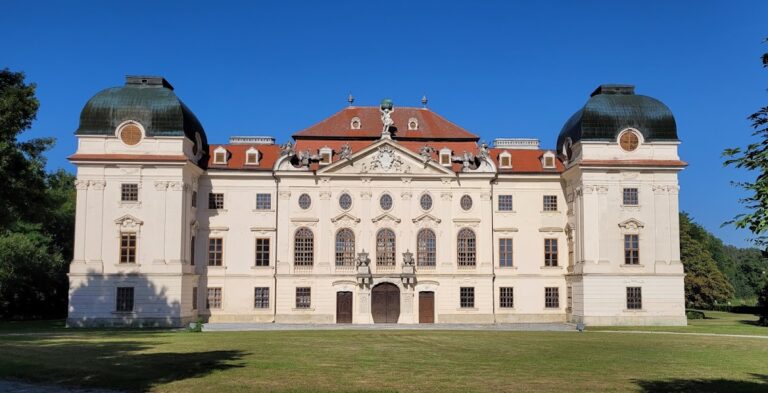Schloss Drosendorf: A Baroque Castle and Historic Monument in Austria
Visitor Information
Google Rating: 4.3
Popularity: Low
Google Maps: View on Google Maps
Official Website: www.schloss-drosendorf.com
Country: Austria
Civilization: Unclassified
Remains: Military
History
Schloss Drosendorf is located within the town of Drosendorf-Zissersdorf in the modern country of Austria. It was originally established by medieval European builders as part of the town’s early defensive structures.
The town of Drosendorf first took shape around the year 1200, when a planned settlement was laid out atop a broad hill beside the Thaya River. This early urban design included fortified walls that defined the growing community. The name Drosendorf appears in historical documents by approximately 1240, marking its status as a recognized city. During the regional conflicts of the late 13th century, Drosendorf witnessed military action, notably in 1278 when it was besieged amid the power struggles between King Rudolf I of Germany and Ottokar II Přemysl of Bohemia. Following this turbulent period, the city came under the control of the Habsburg dynasty in 1279, a change which influenced its subsequent development.
The castle itself originated in the high medieval period and was initially connected to a fortification near the local parish church of St. Peter and Paul located in the old town district known as the “Altstadt.” Over time, the castle evolved and was incorporated into the southeastern corner of Drosendorf’s city defenses, strengthening the town’s protective network.
Ownership of Schloss Drosendorf passed through a series of noble families over the centuries. Early proprietors included the Babenbergs, followed by Ulrich von Kapellen and Stephan von Maissau. In 1332, a notable figure, Eberhard VI. von Wallsee, of the Wallsee family, took possession. The estate continued to change hands, passing to the Eitzing family around 1438, then to Johann Mrakesch von Noskau in 1506. The Mollart barons acquired it in 1574, with later owners including the Muschinger and Kurz families. The Sprinzenstein counts came into possession in 1660 but sold the property just over a decade later, in 1671, to the Lamberg counts. Since 1822, the estate has been held by the Hoyos-Sprinzenstein family, with ownership currently belonging to Dipl.-Ing. Markus Hoyos.
A significant transformation of the castle occurred following a destructive fire in 1694. While the structure had long maintained a fortress-like character, the rebuilding after the fire introduced the high Baroque style, shaping Schloss Drosendorf into the form it largely retains today. This post-fire appearance is confirmed by a city view created in 1645 by the artist Matthäus Merian, which demonstrates that the castle’s Renaissance identity had previously been misunderstood.
The castle endured considerable harm during the final stages of World War II. In 1960, its use shifted toward hospitality, when it was converted into a bed and breakfast, a role which it partially maintains. From 1978 until 2021, the castle served as an educational facility, leased to the Lower Austrian Chamber of Agricultural Workers. Recently, since 2022, Schloss Drosendorf has operated under new management as a mixed-use schlosshotel, collaborating with the Technical University of Vienna on research projects focused on rural development.
Throughout its history, Schloss Drosendorf has remained a protected historic monument under the care of the Austrian Federal Monuments Office, ensuring its preservation. Its cultural significance was highlighted in the summer of 2021 when it was used as a filming location for the historical film “Keinen Schritt zurück!”.
Remains
Schloss Drosendorf presents as a high Baroque castle complex that retains its foundational character as a fortified structure. It is positioned directly adjoining the medieval city walls on the southeastern edge of the historic town, emphasizing its original defensive role within the urban environment.
The castle’s layout incorporates a central courtyard that serves as a focal point within the complex. Heraldic signs, including coats of arms, decorate both the courtyard and the gate building, reflecting the families associated with the castle’s history, such as the Lamberg and Kurz lineages. These visible emblems provide insight into the noble heritage embedded within the site’s fabric.
Key structural elements include the gate building, which controls passage into the inner courtyard, and a historic well located within this sheltered space. These features, documented through photographs and site studies, illustrate the everyday functional aspects of the castle as a defensive residence and administrative center. The building materials and ornamentation date from the post-1694 reconstruction and showcase stylistic elements typical of the high Baroque period.
Despite sustaining serious damage during World War II, the castle’s current state allows for its ongoing use as both a hotel and educational center, demonstrating the effectiveness of restoration efforts. The spatial relationship of the castle to the remaining city fortifications remains clearly perceptible, with the structure physically integrated into the line of the old town walls. This integration underlines the castle’s enduring architectural and historical connection to Drosendorf’s medieval urban defense system.
Overall, Schloss Drosendorf stands as a well-preserved example of a Baroque castle rooted in medieval fortification, providing a rare and tangible link to the layered history of the town’s development over several centuries.










